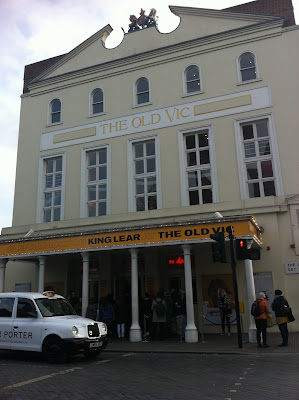Rather than trying to travel home late at night after my theatre-going on Saturday, I stayed overnight at a hostel close to St Paul's Cathedral. So I took the opportunity to take a few pictures of the cathedral from a slightly different angle from usual!
Then, in the morning, as it was Sunday and I was so close, I decided to go to the cathedral for the first service of the day.
It's years since I've been to St Paul's, and I had forgotten how opulent and visually impressive it is (even the Baroque is not my favourite architectural style)
There is also something quietly impressive about participating in a service in such a building, Although it seems that even St Paul's can't muster a large congregation at 8 a.m. - there can't have been more than about 25 people attending!
 |
| Photo by DAVID ILIFF. License: CC-BY-SA 3.0 |
After the service and checking out of the hostel, I went to the Victoria and Albert museum to see their current exhibition - Opus Anglicanum. For those (like me!) not fluent in Latin, this means, simply, 'English Work', and refers to embroidery, created in England during the 12th to 14th Century when, apparently, England led the world in creating such work.
 |
| The Toledo Cope, 1320-30, England. © Toledo, Tesoro de la Catedral, Museo de Tapices y Textiles de la Catedral |
The exhibition isn't huge, but it is fascinating. Most of the embroidery which has survived is ecclesiastic, as items such as vestments were kept carefully, and in some cases, high-status Bishops or other priests would be buried in their best vestments, so these were preserved in their tombs. There were one or two non-ecclesiastical items, most notably the funeral achievements of the Black Prince (1367), and a fragment of a 14th C. horse trapping.
 |
| Fragment of Horse Trapper - 1330-1340 |
Extraordinarily, some of the items in the exhibition have been loaned by the current owners, which are the same churches or institutions they were originally made for - 700 or 800 years ago!
 |
| Detail from the Steeple Ashton Cope (1330) |
I would have liked it had the exhibition included a little more background information - more details of the saints depicted on the garments, and the other images - I am not sure whether all the birds on the Toldeo Cope are symbolic or primarily decorative, for instance, but despite this, I enjoyed the exhibition.
The museum helpfully offered a little booklet which had crib sheets for each of the pieces, telling you which saints and bishops were depicted (I particularly enjoyed the images of St Margaret of Antioch, who had a Dragon) , and also a helpful diagram explaining what copes, chasubles and orphreys are, for those not intimately familiar with vestments!
After visiting the exhibition, I had time to visit some of the rest of the museum. I found a rather nice 15thC tapestry depicting the Trojan War, for instance.
And of course, no visit to the V and A would be complete without a trip to the cast court, which features 19th C plaster cast reproductions of Italian sculptural masterpieces...
 |
| for Nathalie |
















